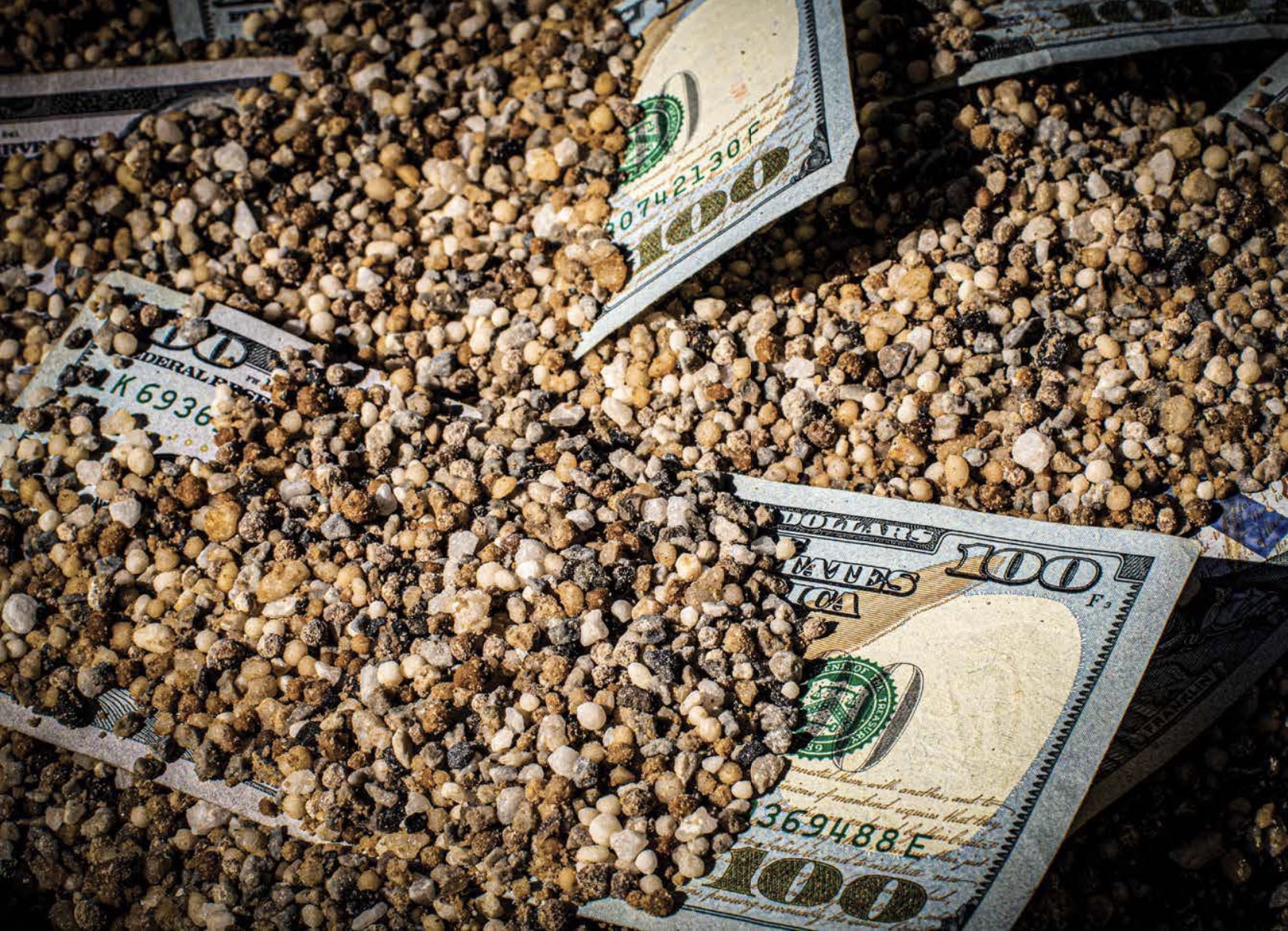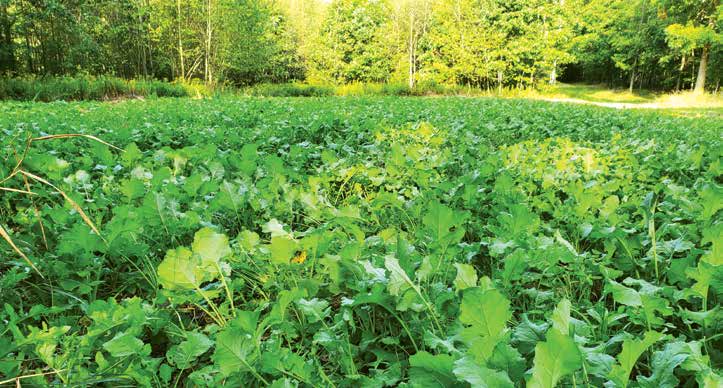How To Maximize Availability To Aid Nutrient Uptake And Reduce Fertilizer Costs

Smart planning and management can help absorb the current high cost of food plot fertilizer.
by: Joyce Allison Tredaway Ph.D.
As we seek relief from higher prices at the pump and grocery store, we won’t find that with fertilizer for food plots. Potash is near an all-time high of $800 per ton, according to a recent study released in March. In addition, continuing supply chain disruptions have caused the main chemicals in fertilizer — nitrogen, phosphorus and potassium — to increase since Spring 2021. A bag of fertilizer that sold for $25 in 2021 now sells for about $50. With such price increases, it’s important to maximize nutrient availability and reduce fertilizer costs wherever possible.
Proper Planning
A soil test is the basis of all fertilizer and lime applications. Basing your fertilizer decisions on a soil test report ensures that you’re only applying the nutrients needed, because soil testing laboratories provide quality analysis on soil fertility status. Once you receive the report, the agronomist at the lab can make the fertilizer recommendations based on the seed product you intend to plant such as Imperial Whitetail Clover, Imperial Whitetail Fusion, Imperial Whitetail Beets and Greens or others. You just need to explain to the agronomist what the blends are in your Whitetail seed mix. In addition, they can also correct the high soil acidity by recommending liming quantities to increase soil pH. Really, the main goal of liming is to neutralize the toxic elements that occur during high acidity — especially aluminum and manganese — while improving the availability of desired elements. Acidic soils also affect the availability of nutrients plants can access. Regardless of how much fertilizer you apply to an acidic soil, those nutrients are not available to plants. Liming also increases the availability of phosphorus, molybdenum and boron while promoting microbial growth, development and processes, which helps produce nitrogen in legumes by biological nitrogen fixation. Finally, limestone is a cheaper input than fertilizer, which improves efficiency.
Be sure to know the size of the area to be fertilized. Having the correct measurements of field(s) to be fertilized prevents overfertilization and wasting money.
Properly calibrate your fertilizer spreader so it only applies the amount needed. This is a trial-and-error system. Determine how many bags of fertilizer you need for a food plot. For rotary spreaders, open the gate a small amount, and observe the flow rate. Multiple passes with a rotary spreader set at a small gate opening are better than fewer passes using a more open gate. Spread fertilizer in a serpentine pattern and repeat in a perpendicular direction.

Don’t Guess
Not using a soil test will leave you depending on guess work, which can be wasteful and costly. Randomly using one blended fertilizer for all forages and all food plots without a soil test is an example of costly waste. For example, nitrogen in a blended fertilizer is not needed for clover or alfalfa. So why apply a nitrogen blended fertilizer where it will not be used?
For forages that need supplemental nitrogen — such as brassicas, cereal grains and sugar beets — consider split fertilizer applications. Split applications simply involve applying half of the recommended fertilizer rate before planting and the other half 30 to 45 days later. This is more efficient compared to one preplant application and is standard practice in conventional agriculture. In addition, rather than using blends such as 10-10-10 or 13-13-13 typically found at most hardware or nurseries, use fertilizer dealers like a reputable COOP that might have blends more appropriate for forage crops and soil fertility stature. Prioritize macronutrients — nitrogen, phosphorus and potassium — over micronutrients. If your food plots contain a forage that needs nitrogen, that’s the nutrient that will provide the greatest return on investment and is generally the most limiting.
The need for phosphorus and potassium depends highly on management philosophy. A soil can contain enough of each nutrient (particularly phosphorus) that it might be easier to cut down on phosphorus and potassium than nitrogen or sulfur, which readily leach from the soil in their crop-available forms.
Increased fertilizer costs are another reason to consider establishing perennials — such as clover, alfalfa or chicory — which use less nitrogen and are cheaper to grow during the current economic conditions. This is a great option in areas where weeds won’t be a limiting factor.
Manure can provide a valuable source of nutrients and is abundant in many parts of the country. Strive to maximize the efficiency of the nutrients in manure to reduce the amount of supplemental fertilizer required.
Inflation and supply chain disruptions will likely continue for a while. Just as in any other phase of our lives, increased efficiency is critical to managing high fertilizer costs. In food plots, increased efficiency comes with forward planning and thinking through critical managerial tasks.
